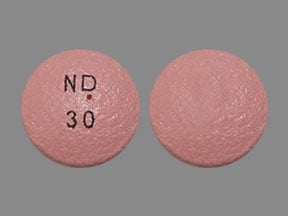
Nifedipine ER Osmotic Release Coupons & Savings Card – Discount Prices from $6.61
Generic for: Procardia xl
My prescription
Edit
30MG, Nifedipine ER Osmotic Release (30 Tablet Extended Release 24 Hours)
Select pharmacy

CVS
$19.74
COUPON PRICE
Walmart
$6.61
COUPON PRICE
Albertsons
$10.10
COUPON PRICE
Walgreens
$12.63
COUPON PRICEFree Nifedipine ER Osmotic Release Savings Card

Walmart
$6.61
Show this coupon to your pharmacist
ID
LH2442C315
PCN
CHIPPO
BIN
019876
GRP
LHX
This coupon is not insurance
Generic for: Procardia xl
More prescriptions for hypertension
More prescriptions for hypertension
Price history for Procardia Xl (brand) & Nifedipine ER Osmotic Release (generic)
30 Tablet Extended Release 24 Hours, 30MG
Average retail price for Procardia Xl
Average retail price for Nifedipine ER Osmotic Release
Average SaveHealth price for Nifedipine ER Osmotic Release
Our price history data is based on aggregated prescription data collected from participating pharmacies in America. Our prescription data updates daily to reflect the latest price changes. If you notice a missing data point, it means there wasn't sufficient data available to generate a monetary value for that date.
We analyzed Nifedipine ER Osmotic Release prices for (30MG, 30 Tablet Extended Release 24 Hours) over the last 12 months. The average retail price was $52.03, while the average price using the SaveHealth discount card was $14.78. That's a savings of approximately 71.59% when using our Nifedipine ER Osmotic Release coupon.
Compared to the generic version, Procardia Xl had an average price of $474.44 over the same time period. With the SaveHealth savings card, Nifedipine ER Osmotic Release is 96.88% cheaper on average than Procardia Xl.
*Retail prices are based on pharmacy claims data, and may not be accurate when we don't have enough claims.
Nifedipine ER Osmotic Release dosage forms
Dosage Quantity Price from Per unit 30MG 30 Tablet Extended Release 24 Hours $6.61 $0.22 30MG 60 Tablet Extended Release 24 Hours $10.73 $0.18 30MG 90 Tablet Extended Release 24 Hours $21.34 $0.24 60MG 30 Tablet Extended Release 24 Hours $7.39 $0.25 60MG 60 Tablet Extended Release 24 Hours $12.27 $0.20 60MG 90 Tablet Extended Release 24 Hours $23.66 $0.26 90MG 30 Tablet Extended Release 24 Hours $10.89 $0.36 90MG 60 Tablet Extended Release 24 Hours $19.27 $0.32 90MG 90 Tablet Extended Release 24 Hours $27.81 $0.31
| Dosage | Quantity | Price from | Per unit |
|---|---|---|---|
| 30MG | 30 Tablet Extended Release 24 Hours | $6.61 | $0.22 |
| 30MG | 60 Tablet Extended Release 24 Hours | $10.73 | $0.18 |
| 30MG | 90 Tablet Extended Release 24 Hours | $21.34 | $0.24 |
| 60MG | 30 Tablet Extended Release 24 Hours | $7.39 | $0.25 |
| 60MG | 60 Tablet Extended Release 24 Hours | $12.27 | $0.20 |
| 60MG | 90 Tablet Extended Release 24 Hours | $23.66 | $0.26 |
| 90MG | 30 Tablet Extended Release 24 Hours | $10.89 | $0.36 |
| 90MG | 60 Tablet Extended Release 24 Hours | $19.27 | $0.32 |
| 90MG | 90 Tablet Extended Release 24 Hours | $27.81 | $0.31 |
Nifedipine ER Osmotic Release Warnings
When using nifedipine, it's important to be aware of potential interactions with other substances, as they can impact its effectiveness. Below are key safety details and warnings to consider:
Drug Interactions: Certain medications can interfere with how nifedipine is processed in the body. These include:
- Apalutamide and enzalutamide.
- Mitotane.
- St. John's wort.
- Rifamycins, such as rifabutin and rifampin.
- Drugs for seizure control, including carbamazepine, phenobarbital, and phenytoin.
Products Containing Stimulants: Some over-the-counter products may increase heart rate or blood pressure. It's crucial to:
- Inform your pharmacist about all the products you are currently using.
- Seek advice on how to safely use products like cough-and-cold medications, diet aids, or NSAIDs (e.g., ibuprofen, naproxen). Adhering to these guidelines can help ensure safe and effective use of nifedipine. Always consult with healthcare professionals if you have any questions or concerns.
Nifedipine ER Osmotic Release Side Effects
Common side effects:
- Headache
- Dizziness
- Nausea
- Flushing
- Constipation
- Leg or muscle cramps
- Sexual problems
Less common but important to monitor:
- Swelling of the ankles or feet
- Shortness of breath
- Unusual weakness or tiredness
- Irregular heartbeat
- Fainting
- Mental or mood changes
- Swollen or tender gums
- Vision changes
- Severe constipation
- Abdominal pain
- Black stools
Serious side effects:
- Worsening chest pain
- Heart attack
- Allergic reactions (rash, itching, swelling of face, tongue, or throat, severe dizziness, trouble breathing)
